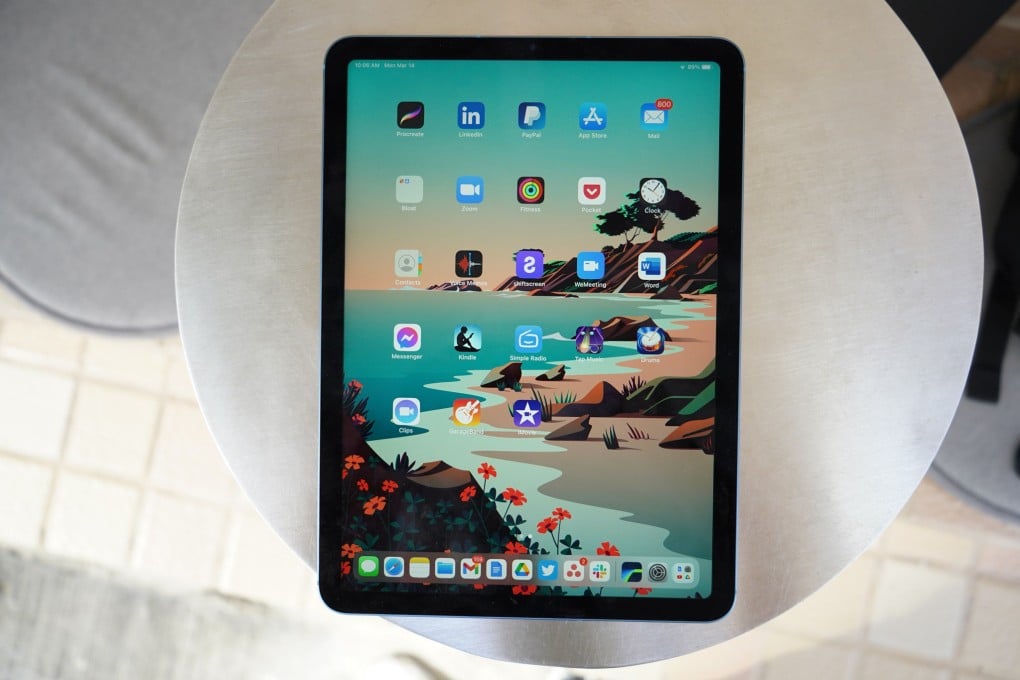Advertisement
Review | Apple iPad Air 2022 review: decent price, new colours, while M1 chip gives insane power and battery life – but is it too good?
- The iPad Air 2022’s new M1 chip means games, Netflix, anything runs flawlessly and it’s great for work too, easily lasting an eight-hour day of solid use
- But it’s got competition – Samsung’s Tab S8 series offers more bang for your buck – and you could argue Apple’s 11-inch iPad Pro is now redundant
Reading Time:3 minutes
Why you can trust SCMP
3

In the Apple iPad hierarchy, the Pro is the most powerful but it’s also pricey and relatively large. Further down are the Mini and standard iPad, which are more affordable and lightweight, but perhaps too small to get real work done.
Advertisement
The iPad Air is the happy medium: the one machine that truly excels at both work and play. The 2022 update should further cement it as the default iPad option for most – as well as almost make one of the Pro models redundant.
Hardware and design
The iPad Air 2022 is the exact same design as the iPad Air 2020, save for new flashy colour options like blue and purple. That means you’re getting a 10.9-inch 60Hz LCD display, an aluminium chassis with flat sides and the same dimensions. At 462g and with a thickness of 6.1mm, the iPad Air is small enough to hold with one hand for a reasonable amount of time.
There are three hardware upgrades: the front-facing camera is now a 12-megapixel ultra-wide lens instead of the grainy 7-megapixel camera from 2020; RAM has been doubled from 4GB to 8GB; and the processor got bumped up to the M1 chip. It is this last part that brings the major improvements.

The M1 has been much covered in the tech industry, but in short, it is Apple’s self-designed silicon chip that has proved to be more powerful and significantly more efficient than Intel’s processors, and has been used in Apple’s recent iMac computers.
Advertisement

Advertisement